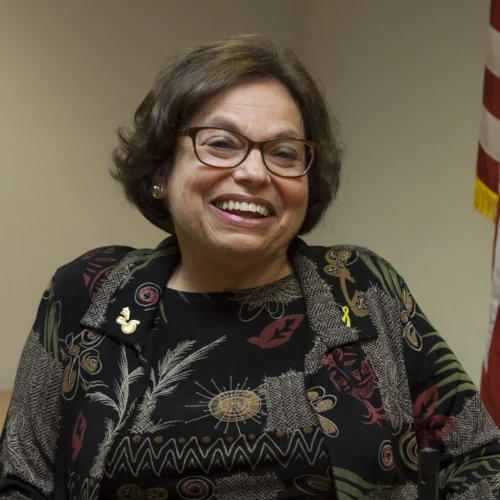by Chris Prange-Morgan
This article originally appeared in Psychology Today. Reprinted by permission.
Last month, the disability community lost an icon. Judy Heumann, who dedicated her life to changing the legal landscape for, and improving the lives of people with disabilities, died on March 4 at age 75.
Known as the “mother of the disability rights movement,” Heumann organized protests, advocated for new legislation, and served in two presidential administrations. She appeared in the Oscar-nominated documentary “Crip Camp: A Disability Revolution,” which came out in 2020, and wrote two books: Being Heumann: An Unrepentant Memoir of a Disability Rights Activist written (with Kristen Joiner) and Rolling Warrior: The Incredible, Sometimes Awkward True Story of a Rebel Girl on Wheels Who Helped Spark a Revolution.
Described by the Washington Post as a “badass,” Heumann used her experience as a wheelchair to change the landscape for everyone living with a disability. In 1973, she helped spearhead Section 504 of the Rehabilitation Act, which was signed into law as the first federal civil rights protection for people with disabilities and paved the way for the Americans with Disabilities Act (ADA) in 1991. More recently she wrote A Roadmap For Inclusion: Changing the Face of Disability in Media in partnership with the Ford Foundation.
Here are three key takeaways from Heumann’s lifetime of advocacy work.
1. “Ability” is a continuum, and “accessibility” benefits everyone.
When most people think of accessibility, they think about wheelchair ramps, paved walkways, and the elimination of stairs. Most folks don’t think about how universal design can make accessibility easier for everyone, including you.
Consider walking in and out of the grocery store. Can you believe that at one point in time, doors were not automatic? Thanks to advances in architectural and industrial design, automatic doors became the norm. It’s a no-brainer that opening doors while carrying bags of groceries is challenging, cumbersome, and even dangerous.
In a similar fashion, most of us utilize assistive devices on a daily basis without even realizing it. Volume controls enhance our ability to hear. Glasses help us see better—at a distance and up close. Automobiles and bicycles help us get from place to place more quickly and easily.
Some folks need more time to learn things than others. Many people require additional time to get places. We use calculators and computers and other devices to make many areas of our lives easier.
These are all adaptations—helping to simplify the areas of our lives that can be difficult, challenging, or even impossible. Consider what life would be like without these adaptations, and you may realize that you would qualify as having a “disability” in certain situations.
The concept of “ability” is not straightforward, nor is the concept of disability. When thinking about what folks are able or not able to do, it’s important to look at the barriers in the environment that make opportunities accessible or inaccessible—easy or hard.
It’s also important to normalize the need for help and to destigmatize the necessity for accommodations. We all need them from time to time, whether we’re conscious of this realization or not.
2. Modifications harness creative thinking, and creative thinking is a life skill.
Have you ever heard the phrase “Necessity is the mother of invention”? In the business and marketing world, we’ve learned to capitalize upon novel ideas. If there’s a way to make the workflow easier, save time or money, or seize an opportunity to make peoples’ lives easier, resources pour in to make those ideas come to fruition.
In the world of disability, creative thinking is the modus operandi. Folks navigating the challenging landscapes of their lives have dialed in these Spidey senses out of necessity. Modifications require creative thinking, and the ability to think creatively has benefits for the way we all live, learn, and interact.
However, it can be exhausting to live this way every day. Like navigating a physical, sensory, or emotional obstacle course, there are times when it would be helpful if the world was not quite so difficult to find our way through. That’s where empathy comes in.
We must begin to think of ourselves as part of a broader humanity, where challenges and obstacles are just part of the landscape—and our job is to break down the barriers for everyone. Making life less complicated is common sense. It’s hard-wired into how we navigate the world and our evolution within it.
3. We are all temporarily “able-bodied.”
In recent years, we’ve seen many more people with disabilities in advertisements, movies, and other forms of media—a refreshing shift. Through the hard work of Judy and others in the disability community, media outlets have begun to realize that folks with disabilities are not those “other” people, sitting on the sidelines and wishing to contribute, or symbols to be used for inspiration. They’re us.
Each of us comes into the world helpless, needing assistance to survive. If we’re lucky, we’ll grow into old age, where we’ll lose many of our abilities along the way. The saying that “we need one another” is not some idealistic notion. It’s true—we’re all able and not able in many ways. The further we walk along life’s trajectory, the more apparent this becomes.
“I believe more and more that our movement can’t be isolated,” Heuman said in an interview shortly before she died.[6] “We need to be part of a changing world.”[7] It’s when we begin to realize that breaking down barriers has a ripple effect—for ourselves, others, and the world—that everyone wins.
